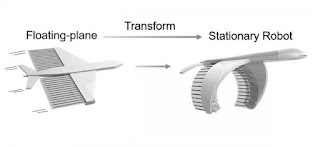Microrobtics - Medicine's Future

New Shape-Changing, Swimming Tiny Robot Source: Dartmouth College Promises Targeted Drug Delivery in the Body to Fight Cancer Engineers at Dartmouth College and the City University of Hong Kong have invented a tiny, shape-changing, swimming microrobot that can instantly stop and go inside the human body. Researchers believe this tiny, soft robot can deliver drugs much more accurately in the human body. It is light- controlled, swims, changes shape and can instantly stop and go on command. It is cutting edge medicine and robotics. Targeted Medical Therapies to Defeat Cancer The researchers combined cardiac tissue engineering, a 3D printed wing and a light-sensitive gel to produce the soft robot. Near infra-red light causes it to change shape and stop and go in fluid like the bloodstream. It is specifically designed to target and destroy cancer cells by accurately delivering medication. Tiny Whale-like Tail The robot is remotely controlled...
